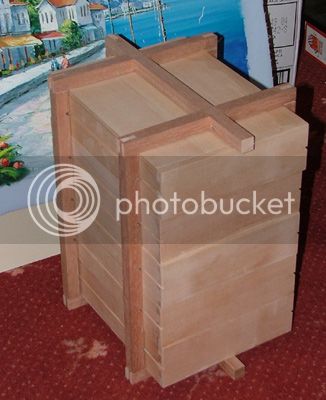devonwoody
Established Member

Attached photograph is a project nearing completion, boxes (trays) are glued and sanded down, top lid and frameworks are at present loose (unglued), wooden drawers pulls (same timber as framing) are still to be attached to drawer fronts and under consideration is a carrying handle (in timber) to be attached to top frame.
This is the first time I have ever used hardwood or made a display piece of furniture. Normally in the past softwood has been used which entailed staining then oiling of poly varnish.
So I am looking for advice on how other members would finish off this piece of furniture which is going to be used by the wife as an embroidery storage unit. Timber is sycamore and Brazilian mahogany.
The design of this piece of furniture was found on my last Australian holiday when visiting the home of AlexS in Sydney who kindly has given his photographs and measurements to work with. This invitation came about solely via an internet forum thread similar in vain to the UKworkshop.

































